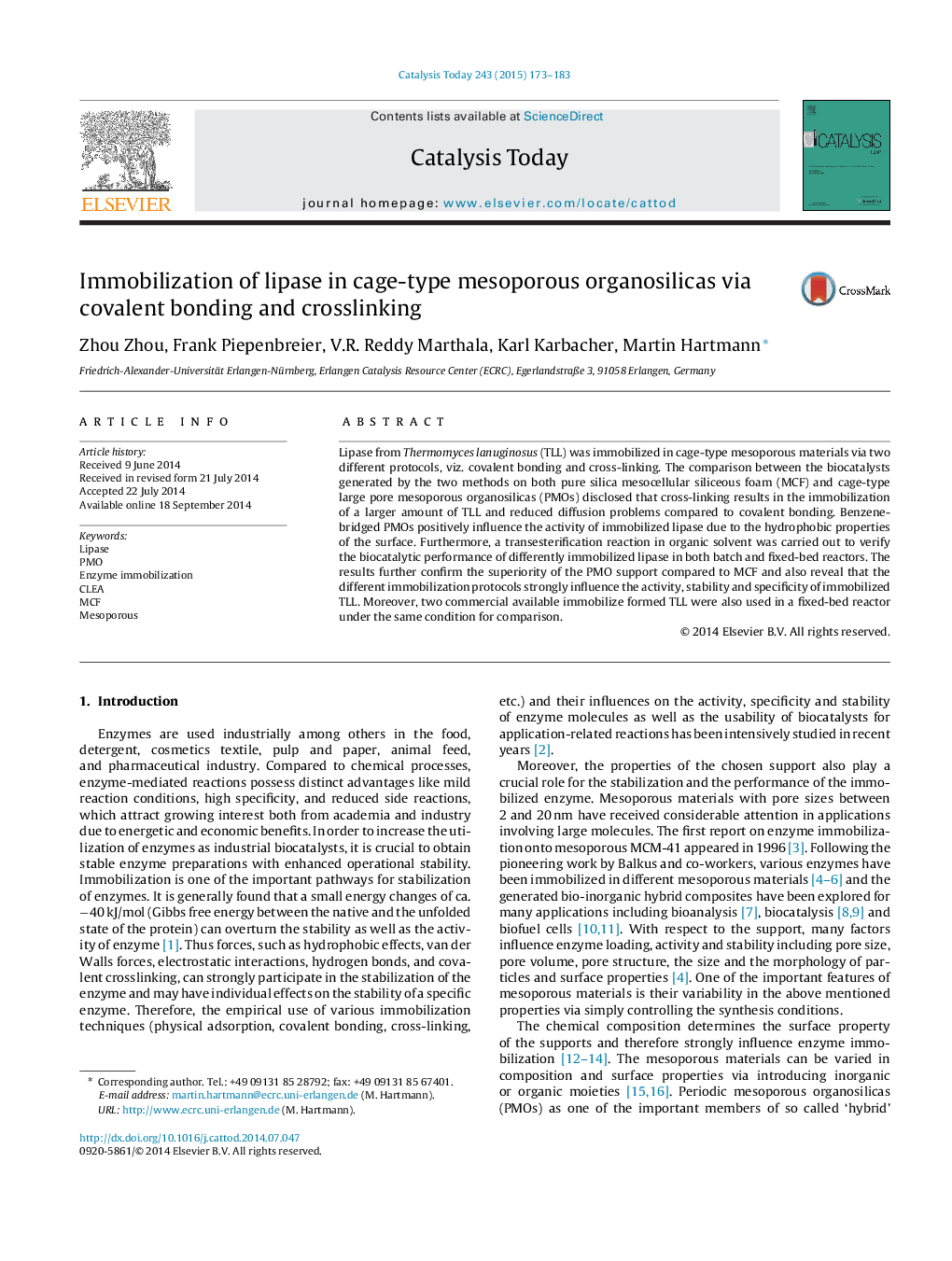| کد مقاله | کد نشریه | سال انتشار | مقاله انگلیسی | نسخه تمام متن |
|---|---|---|---|---|
| 54371 | 47007 | 2015 | 11 صفحه PDF | دانلود رایگان |
• A mesocellular foam and different PMOs are compared for lipase immobilization.
• The benzene-bridged PMO shows superior performance even to native lipase.
• The biocatalyst exhibits good performance and stability in a fixed-bed reactor.
Lipase from Thermomyces lanuginosus (TLL) was immobilized in cage-type mesoporous materials via two different protocols, viz. covalent bonding and cross-linking. The comparison between the biocatalysts generated by the two methods on both pure silica mesocellular siliceous foam (MCF) and cage-type large pore mesoporous organosilicas (PMOs) disclosed that cross-linking results in the immobilization of a larger amount of TLL and reduced diffusion problems compared to covalent bonding. Benzene-bridged PMOs positively influence the activity of immobilized lipase due to the hydrophobic properties of the surface. Furthermore, a transesterification reaction in organic solvent was carried out to verify the biocatalytic performance of differently immobilized lipase in both batch and fixed-bed reactors. The results further confirm the superiority of the PMO support compared to MCF and also reveal that the different immobilization protocols strongly influence the activity, stability and specificity of immobilized TLL. Moreover, two commercial available immobilize formed TLL were also used in a fixed-bed reactor under the same condition for comparison.
Figure optionsDownload high-quality image (168 K)Download as PowerPoint slide
Journal: Catalysis Today - Volume 243, 1 April 2015, Pages 173–183
